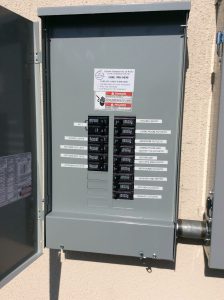 What is an electrical overload?
What is an electrical overload?
When too much current passes through your electrical wires, you may experience an electrical overload. When this happens, the wires may heat up and melt which may result in a fire starting.
Appliances like televisions, microwaves, hairdryers are the highest power-consuming devices in the average home. The power consumption can go higher once you start thinking of lighting and other smaller devices. A high number of devices will lead to many electrical circuits on your electrical panel.
You run the risk of having an electrical overload once you begin to draw too much power from an electrical source or circuit. While different buildings have different designs, circuit breakers or fuses are often employed to prevent electrical overload. A fuse will burn itself out to perform its job and will need a replacement once it has done so. With circuit breakers, they only trip off if a lot of electrical current is drawn.
Steps to Take to Avoid Electrical Overload
There are a few steps that you can take yourself to avoid the occurrence of an overload.
- Know what circuit powers what device. Identifying what circuit your highest power consuming devices are is the first step. A single circuit is usually dedicated to most of these devices. Such devices include furnaces, toasters, hairdryers, refrigerators, and microwaves. Once you have identified these circuits, it is necessary to pay particular attention to them and avoid connecting other devices to them.
- Avoid having too many connections to one circuit. Having a lot of devices drawing power from a circuit can cause an electrical overload. In most situations, you do not know how dangerous it is until the fuse burns out or the breaker trips off.
To find out what device is connected to a particular circuit, you could turn off one breaker after the other while turning on each device. This will help you determine where each connection goes on your board.
- Note how much power a circuit can supply. You should only connect the appropriately rated device to an equally rated circuit. With a rated voltage of 120 volts, a 15-amp circuit can only supply power of 1800 watts, anything more is an overload of the circuit. Put this in mind when connecting devices to a circuit. It is recommended that you do not load up a circuit to its maximum rating, this will allow for the connection of other irregularly used devices.
- Add more receptacles. At the Electric Connection, we find that most people do not consider getting new receptacles until the old ones burn out. This is wrong. You should get more or better receptacles once you realize that the present ones cannot supply all the electrical power you need. Getting a new outlet will offer you more options in terms of circuit connections and will help reduce downtime in case there is a damaged outlet.
If you are adding new receptacles, you will likely need the help of an electrician. All electrical safety procedures should be implemented before this is done. Contact The Electric Connection for the installation and to ensure you have enough space inside your panel to handle the load. If a panel upgrade is necessary, we will be able to assist as well!




